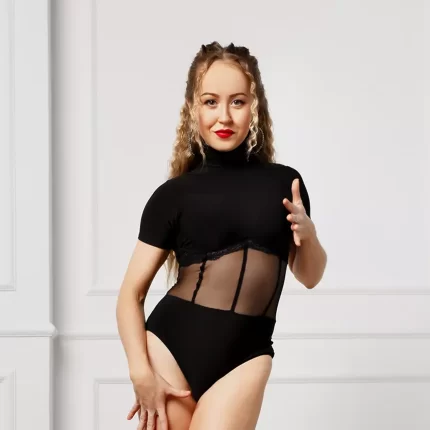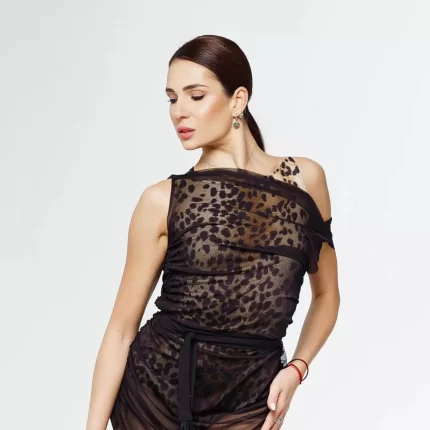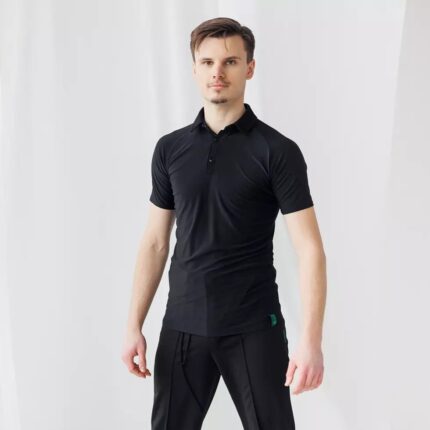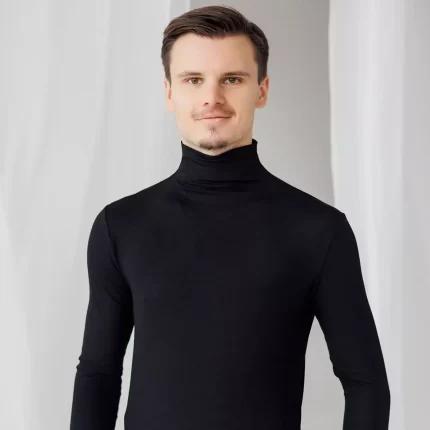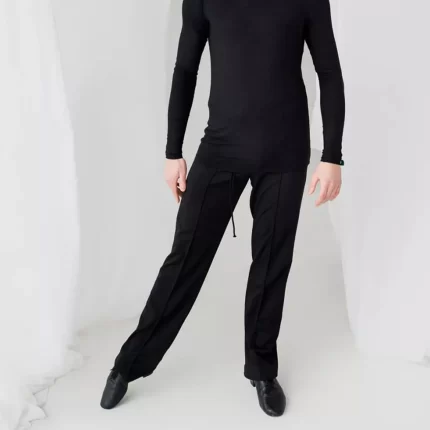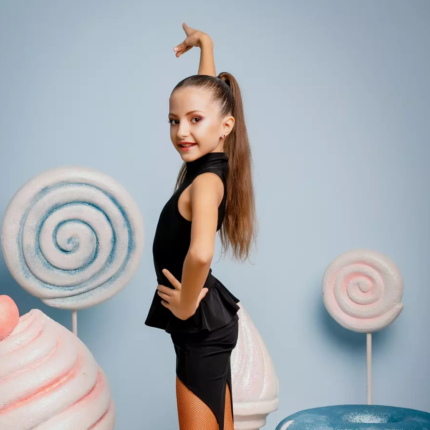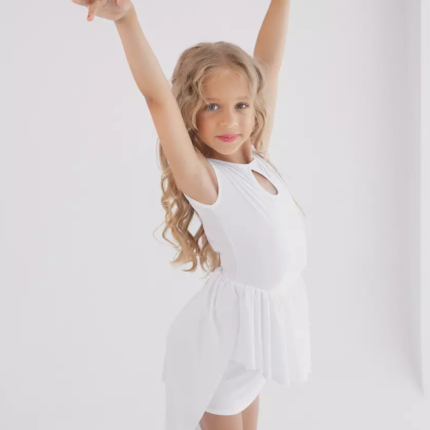Table of Contents
Introduction
Hello dancers! Anna Babiy here, owner of Fashion Dance, and today we’re diving into the world of dance tops! Now, leotards often get a lot of attention, and rightfully so, but the right top can be just as crucial for both comfort and style in the studio. We’re talking about dancewear tops, those essential dance styles that form the foundation of a dancer’s wardrobe. This is more than just something to throw on for class; it’s about finding pieces that enhance your performance, boost your confidence, and allow you to express your individual style.
A well-chosen dance top contributes significantly to comfort and performance. It’s about finding that perfect balance between functionality and aesthetics. From the classic tank top to the elegant wrap top, the options are diverse and exciting. So, whether you’re a seasoned performer or just starting your dance journey, this guide will help you navigate the world of dance tops and build a wardrobe that’s both practical and inspiring. Let’s explore the styles, fabrics, and fits that will help you feel your best, both in and out of the studio!
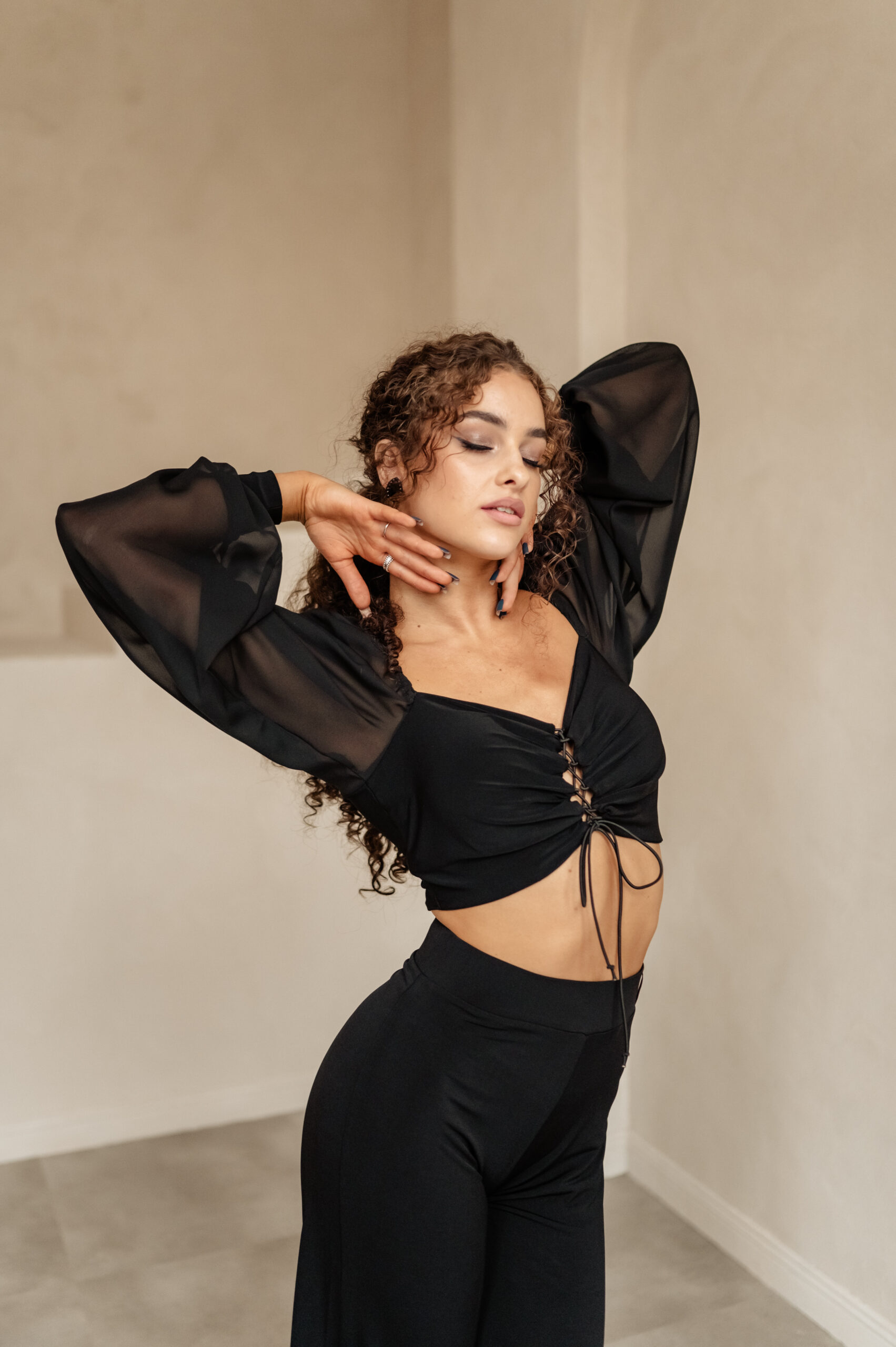
Section 1: Understanding Dance Top Fabrics and Fit
Alright, before we jump into the exciting world of different styles of dance tops, let’s lay down some foundational knowledge. Because, believe me, after years in this business (and a lifetime of dancing!), I know that the fabric and fit of a dance top are just as important – if not more important – than how it looks. A gorgeous top that’s uncomfortable or restricts your movement? No thank you!
This section is all about the essential elements that contribute to a dance top’s performance and comfort. We’re talking about breathability, moisture-wicking properties, stretch, and, of course, achieving that perfect fit that allows you to move freely and confidently. Think of this as the “behind-the-scenes” look at what makes a dance top truly great. So, let’s get to grips with the fundamentals of fabric and fit, and set the stage for choosing tops that will help you dance your best!
Subsection 1.1: Breathable and Moisture-Wicking Materials
Okay, let’s talk sweat! Because, let’s be honest, dancing is work. Whether it’s a graceful ballet adagio or a high-energy hip-hop routine, you’re going to be moving, and you’re going to be sweating. And a dance top that doesn’t breathe? That’s a recipe for discomfort, stickiness, and a generally unpleasant (and distracting!) experience. That’s why choosing breathable fabrics and moisture-wicking tops is absolutely crucial for any dancer.
What do I mean by “breathable” and “moisture-wicking”? I’m talking about fabrics that allow air to circulate freely and that actively pull moisture (sweat) away from your skin, helping it evaporate quickly. This process is key to regulating your body temperature, staying cool and dry, and feeling comfortable, even during intense activity. Trust me, this is not something you want to overlook!
So, which fabrics are the champions in this arena? Let’s break it down:
- Cotton: Good old cotton! It’s soft, comfortable, and naturally breathable. However, it can hold onto moisture a bit more than some synthetic fabrics, so it’s often blended with other materials for dancewear. A cotton blend is often a great choice, particularly for those with sensitive skin.
- Lycra/Spandex: These are the magic ingredients that give dance tops their stretch and recovery (that ability to “snap back” into shape). Lycra and spandex are essentially the same thing (just different brand names), and they’re essential for allowing a full range of movement. They also tend to be very good at wicking away moisture.
- Polyester: A synthetic fabric known for its durability, wrinkle resistance, and moisture-wicking properties. It’s often blended with cotton or Lycra for added comfort and stretch.
- Microfiber: This is a synthetic material that is valued for its softness and lightness, which are very useful for creating dance clothes.
- Supplex Nylon: This is a specially engineered type of nylon that’s designed to feel soft and cottony, while still offering excellent breathability and moisture-wicking capabilities.
You’ll often find dance tops made from a blend of these fabrics, combining the best qualities of each. For example, a cotton-Lycra blend offers the softness and breathability of cotton with the stretch and moisture-wicking properties of Lycra. The key takeaway? Look for fabrics specifically designed for athletic wear, as these will typically provide the best performance in terms of breathability and moisture management. Read the labels, do a little research, and prioritize fabrics that will keep you feeling fresh and comfortable, no matter how hard you’re working!
Subsection 1.2: The Importance of a Secure and Comfortable Fit
Alright, we’ve tackled the fabric fundamentals, now let’s talk about fit! Because even the most breathable, moisture-wicking top won’t be much use if it’s digging in, riding up, slipping down, or otherwise restricting your movement. Achieving a proper fit, that is both secure fit and comfortable, is absolutely essential for any dancer. The aim here is avoiding restrictions and allowing for full range of motion. We need to remember that, when we dance, we do not need extra factor that will be distracting us.
Here’s what to keep in mind when it comes to dance top sizing and finding that perfect fit:
- Snug, But Not Tight: For most dance tops (excluding looser styles like some hip-hop tops), the fit should be snug against the body, without any gaping or looseness. But it shouldn’t be so tight that it restricts your breathing, digs into your skin, or limits your range of motion. You should be able to pinch a small amount of fabric, but not a handful.
- Strap Security (For Tank Tops and Camisoles): The straps should sit securely on your shoulders without slipping down or digging in. Adjustable straps can be a great feature for achieving a customized fit.
- Armhole Size (For Tank Tops and Sleeved Tops): The armholes should be large enough to allow for a full range of arm movement, without being so large that they expose too much.
- Length: The length of the top will depend on the style (crop top, standard length, etc.). Make sure the length is appropriate for the dance style and your personal preference. It shouldn’t ride up too high or be so long that it interferes with your movement.
- Neckline: The neckline should be comfortable and shouldn’t restrict your head or neck movement.
The best way to ensure a good fit is to take your measurements (bust, waist, and potentially torso length) and compare them to the size chart provided by the manufacturer. Don’t just rely on your usual clothing size, as dancewear sizing can sometimes be different. And, if possible, try it on! Move around in the top – stretch, bend, reach, do some dance moves – to make sure it feels comfortable and allows you to move freely. A well-fitting dance top is an investment in your comfort, your confidence, and your overall performance.
Section 2: Exploring Different Dance Top Styles
Right, so we’ve laid the groundwork! We know why fabric and fit are so crucial. Now, let’s get to the really fun part: exploring the amazing variety of dance top styles out there! Because, let’s be honest, the options are almost endless, and each style offers its own unique look, feel, and advantages.
This section is your guided tour through the world of dance tops. We’ll be looking at everything from the classic tank top to the trendy crop top, the versatile T-shirt to the elegant wrap top. I’ll share my insights (gleaned from years of experience, both on the dance floor and in the business!) on the key features of each style, and which dance genres they tend to be best suited for. So, get ready to discover the perfect dance tops to build a wardrobe that’s as stylish as it is functional! Let’s dive in!
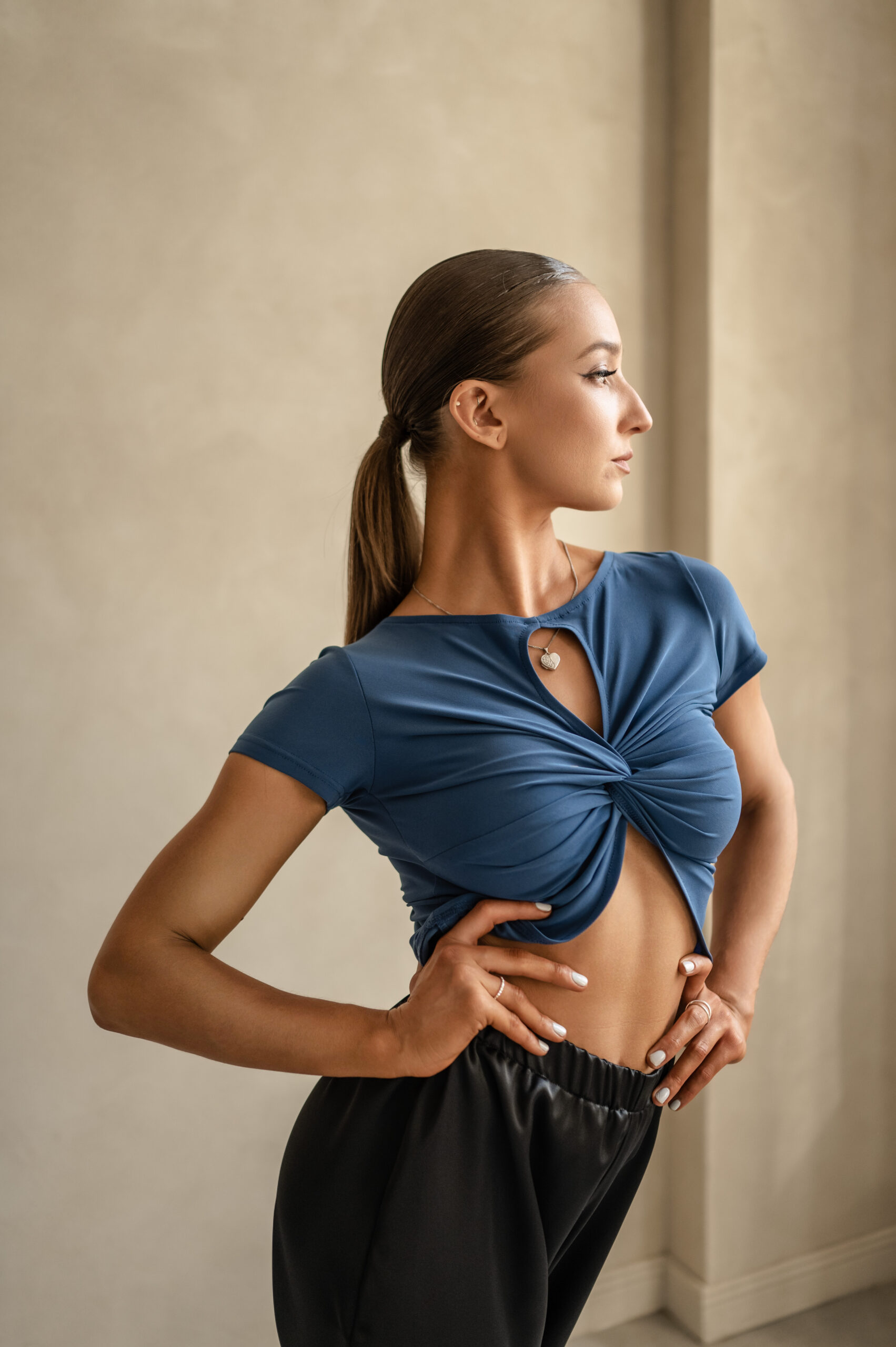
Subsection 2.1: Tank Tops
Okay, let’s start with a true classic: dance tank tops! These are, arguably, the most basic and versatile of all dance tops. Sleeveless tops, offering maximum freedom of movement for the arms and shoulders, tank tops are a staple in almost every dancer’s wardrobe. They are a piece of classic dancewear, and having a versatile style.
Dance tank tops are typically made from breathable, moisture-wicking fabrics like Lycra blends, cotton blends, or performance synthetics. They can be form-fitting or slightly looser, depending on personal preference and the specific dance style.
Here’s what makes tank tops such a popular choice:
- Unrestricted Arm Movement: This is the key advantage. With no sleeves to get in the way, your arms and shoulders are completely free to move.
- Versatility: Tank tops can be worn for almost any dance genre, from ballet to jazz to contemporary to hip-hop. They’re a true all-rounder.
- Layering Potential: They’re perfect for layering under other tops, sweaters, or jackets, providing a base layer of comfort and breathability.
- Wide Range of Colors and Styles: You can find tank tops in just about any color imaginable, and with a variety of necklines and back designs.
- Affordability: They tend to be one of the more affordable dance top options.
So, whether you’re a beginner or a seasoned pro, a tank top is a must-have in your dance wardrobe. It’s a simple, reliable, and versatile choice that will serve you well in countless classes and performances. It’s the foundation upon which you can build a more elaborate dance look, or a perfectly functional and comfortable option all on its own.
Subsection 2.2: Camisole Tops
Now, let’s move on to a slightly more delicate variation of the tank top: dance camisole tops! These tops are characterized by their thin straps, often referred to as “spaghetti straps.” This gives them a more delicate look and, often, a more elegant dancewear aesthetic compared to the wider straps of a traditional tank top.
Camisole tops are typically made from the same breathable, moisture-wicking fabrics as other dance tops, such as Lycra blends, cotton blends, and performance synthetics. They can be form-fitting or slightly looser, and they come in a wide variety of colors and designs.
Here are some key features of camisole tops:
- Thin Straps: This is the defining characteristic, creating a more delicate and refined look.
- Often Used in Ballet: Camisole tops are particularly popular in ballet, where that delicate aesthetic is often prized.
- Can Be Layered: They can be worn on their own, or layered under other tops or over leotards.
- Showcase the Neck and Shoulders: The thin straps draw attention to the neck, shoulders, and upper back, which can be flattering and enhance the lines of the body.
- May Require Special Undergarments: Depending on the design and the dancer’s preference, a special dance bra or a leotard with built-in support may be needed.
While they offer a bit less coverage than tank tops, camisole tops provide a beautiful, elegant option for dancers who want a more refined look. They’re a testament to the fact that dancewear can be both functional and beautiful, allowing dancers to express their individual style while still meeting the demands of their training.
Subsection 2.3: Crop Tops
Alright, let’s turn up the heat a little and talk about dance crop tops! These are, as the name suggests, midriff-baring tops that end above the waist, exposing a portion of the abdomen. They’ve become increasingly popular in recent years, particularly in styles like contemporary, jazz, and hip-hop, offering a modern dancewear option that’s both stylish and functional.
Crop tops can be made from a variety of fabrics, including Lycra blends, cotton blends, and performance synthetics. They can be form-fitting, loose-fitting, or somewhere in between, and they come in a wide range of styles, from simple and sporty to more elaborate and embellished.
Here’s what you need to know about dance crop tops:
- Midriff-Baring: This is the defining characteristic. They expose a portion of the abdomen, creating a trendy and often sporty look.
- Popular in Contemporary, Jazz, and Hip-Hop: You’ll see them everywhere in these dance styles, where that extra freedom of movement and modern aesthetic are often embraced.
- Can Be Layered: They can be worn on their own, or layered over leotards or other tops for added coverage or style.
- Offer Great Ventilation: The cropped design provides excellent ventilation, keeping the dancer cool and comfortable.
- Require Confidence: Let’s be honest, wearing a crop top takes a certain level of confidence! But for many dancers, that’s part of the appeal.
So, while they might not be for everyone, dance crop tops offer a stylish and functional option for dancers who want to embrace a more modern aesthetic. They’re a testament to the fact that dancewear is constantly evolving, reflecting the changing trends and preferences of dancers today. They’re all about freedom of movement, self-expression, and feeling confident in your own skin.
Subsection 2.4: T-Shirts and Long Sleeve Tops
Now, let’s move on to some options that offer a bit more coverage: dance t-shirts and long sleeve dance tops! These are wardrobe staples that provide added coverage, warmth, and versatility, making them ideal for layering, warm-ups, or simply for dancers who prefer a more modest look.
Dance T-shirts and long sleeve tops can be made from a variety of fabrics, including cotton blends, Lycra blends, and performance synthetics. They can be form-fitting, loose-fitting, or somewhere in between, and they come in a vast array of colors, styles, and designs.
Here’s a breakdown of their key features:
- Added Coverage: This is the main advantage. They cover the arms and shoulders, providing more warmth and protection than tank tops or camisole tops.
- Layering Options: They’re perfect for layering. You can wear them over a tank top or leotard for added warmth, or under a jacket or sweater.
- Warm-up Attire: They’re a popular choice for warm-ups, helping to keep muscles warm and prevent injuries.
- Versatility: They can be worn for a variety of dance styles, from ballet to jazz to hip-hop, depending on the specific design and fit.
- Comfort and Familiarity: T-shirts, in particular, are a familiar and comfortable garment that many dancers feel at ease in.
Long sleeve tops are also great choice for a colder weather.
- Thumbholes: Some long sleeve tops include thumbholes, that are very useful, and help keep sleeves in place.
So, while they might not be the flashiest of dance tops, T-shirts and long sleeve tops offer a practical and versatile option that every dancer should have in their wardrobe. They’re the reliable workhorses that provide comfort, warmth, and coverage, allowing dancers to focus on their training without any distractions.
Subsection 2.5: Wrap Tops
And finally, let’s explore a style that exudes elegance and sophistication: dance wrap tops! These tops are characterized by their unique design, which involves wrapping fabric around the body and tying it in place. This creates an adjustable fit and a graceful, flowing silhouette, making them a popular choice for ballet and contemporary dance. They provide very elegant style.
Wrap tops can be made from a variety of fabrics, including soft knits, lightweight Lycra blends, and even sheer materials like mesh or chiffon. They can be short-sleeved, long-sleeved, or even sleeveless, and they come in a range of colors and styles.
Here’s what makes wrap tops so special:
- Adjustable Fit: This is a key advantage. You can tie the top as loosely or as tightly as you like, customizing the fit to your body and your preference.
- Elegant Style: The wrapped design creates a graceful, flowing silhouette that’s particularly flattering in ballet and contemporary dance.
- Versatility: They can be worn over leotards, tank tops, or even on their own, depending on the style and the desired level of coverage.
- Often Used in Ballet and Contemporary: You’ll see them frequently in these dance genres, where that elegant and expressive aesthetic is highly valued.
- Can Enhance Movement: The flowing fabric can accentuate the dancer’s movements, adding a touch of drama and artistry.
Wrap tops are a testament to the beauty and artistry of dancewear. They’re more than just a functional garment; they’re a way for dancers to express their individual style and enhance their performance. They’re a beautiful blend of form and function, offering both comfort and a touch of elegance that’s perfect for the studio and beyond.
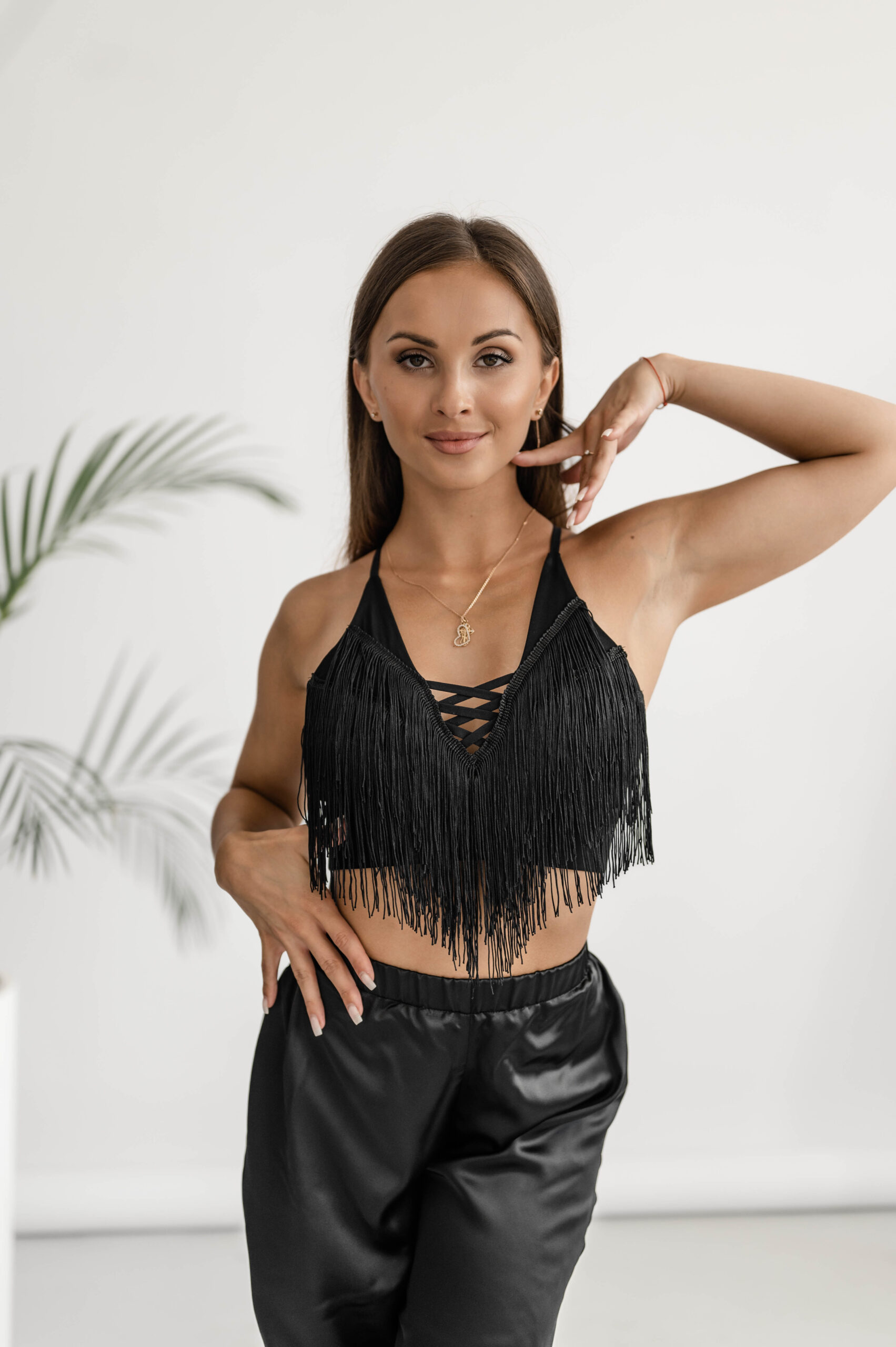
Section 3: Dance Tops for Specific Dance Genres
Alright, we’ve explored the wonderful variety of dance top styles. Now, let’s get a little more specific! Because, while a tank top could technically work for almost any dance genre, certain styles of tops are more commonly associated with particular dance forms. And, as you might guess, there are often very good reasons for that!
This section is your guide to understanding the unwritten (and sometimes very clearly written!) “dress codes” of different dance studios. We’ll be looking at which types of tops are typically favored in ballet, jazz, hip-hop, and contemporary dance, and why. Now, I’m a big believer in personal expression, so I’m not suggesting you must adhere to these conventions! But understanding them can help you make informed choices, ensure your dancer feels comfortable and confident, and, let’s be honest, avoid any awkward “dress code violations” in class. So, let’s take a little tour of the dance world, one top at a time!
Subsection 3.1: Ballet Dance Tops
Okay, let’s start with the elegant and refined world of ballet! When it comes to ballet tops, the focus is often on clean lines, understated elegance, and showcasing the dancer’s posture and technique. While leotards are the quintessential ballet garment, there are certainly times when a separate top is appropriate, either worn over a leotard or, in some cases, as an alternative. We can talk about leotard alternatives, and warm-up tops.
Here’s what you’ll typically find in a ballet class:
- Camisole Tops: These are a very popular choice, often worn over a leotard for added coverage or warmth. The thin straps maintain the delicate aesthetic of ballet.
- Wrap Tops: These are a classic ballet staple, offering an adjustable fit and a graceful, flowing silhouette that complements the lines of ballet movement.
- Fitted T-shirts or Long Sleeve Tops: These can be worn over a leotard for warm-ups or as a more modest alternative, particularly for younger dancers.
- Neutral Colors: Ballet attire often favors muted or pastel colors like pink, white, black, or gray. Bright, bold colors or busy patterns are less common.
- Ballet sweaters: Knitted sweaters, usually with a wrap.
The overall goal is to create a look that’s both elegant and functional, allowing the dancer to move freely while maintaining the clean lines and aesthetic traditions of ballet. The top should complement the leotard (if worn) and not distract from the dancer’s technique. So, while there’s always room for individual preference, understanding these general guidelines can help you choose ballet tops that are both appropriate and stylish.
Subsection 3.2: Jazz Dance Tops
Now, let’s move on to the energetic and expressive world of jazz! Jazz tops tend to be a bit more versatile and allow for more individual style than ballet tops. While comfort and freedom of movement are still essential, there’s often more room for bolder colors, patterns, and designs. Form-fitting tops are common, showcasing movement and allowing instructors to clearly see the dancer’s technique. We can define them as stylish and versatile.
Here’s what you’ll typically find in a jazz class:
- Tank Tops: These are a staple in jazz, offering unrestricted arm movement and a comfortable, versatile option.
- Camisole Tops: Also a popular choice, providing a slightly more delicate look while still allowing for freedom of movement.
- Crop Tops: These have become increasingly common in jazz, offering a modern and stylish look while keeping the dancer cool.
- Fitted T-shirts or Long Sleeve Tops: These can be worn for added coverage or warmth, or as a layering option.
- Wider Range of Colors and Patterns: Unlike ballet, jazz allows for more variety in colors and patterns. You might see bright colors, bold prints, or even embellishments.
The overall aesthetic is one of energy, style, and showcasing the dancer’s personality. The top should allow for a full range of motion, be comfortable and breathable, and reflect the dynamic nature of jazz dance. So, while there are some general guidelines, there’s definitely more room for individual expression and creativity when it comes to choosing jazz tops!
Subsection 3.4: Contemporary Dance Tops
And finally, let’s explore the world of contemporary dance! Contemporary dance tops often reflect the expressive, experimental, and fluid nature of this genre. Versatile styles are key, as contemporary dance often incorporates elements from various other dance forms, including ballet, jazz, and modern. Expressive designs are not only accepted but often encouraged.
Here’s what you might find in a contemporary class:
- Anything Goes (Within Reason!): Seriously, you’re likely to see a wider variety of tops in a contemporary class than in almost any other genre. Tank tops, camisole tops, crop tops, T-shirts, long sleeve tops, wrap tops – they’re all fair game.
- Form-Fitting or Loose-Fitting: Both form-fitting and loose-fitting tops can be appropriate, depending on the specific choreography and the dancer’s preference.
- Layering: Layering is very common in contemporary dance. Dancers might wear a crop top over a leotard, a tank top under a sheer T-shirt, or a wrap top over a camisole.
- Unique Designs: Asymmetrical cuts, cutouts, mesh panels, and other unique design elements are often seen in contemporary dance tops.
- Focus on Movement: Ultimately, the most important thing is that the top allows for a full range of motion and doesn’t restrict the dancer’s expression. It should be one of the modern dancewear example.
Contemporary dance is all about pushing boundaries and exploring new ways of moving. The top, therefore, becomes a tool for self-expression, a way for the dancer to connect with the choreography on a deeper level. So, don’t be afraid to experiment, to try different styles, and to find tops that truly reflect your individuality and artistic vision. Comfort and functionality are still key, of course – but beyond that, the possibilities are practically endless!
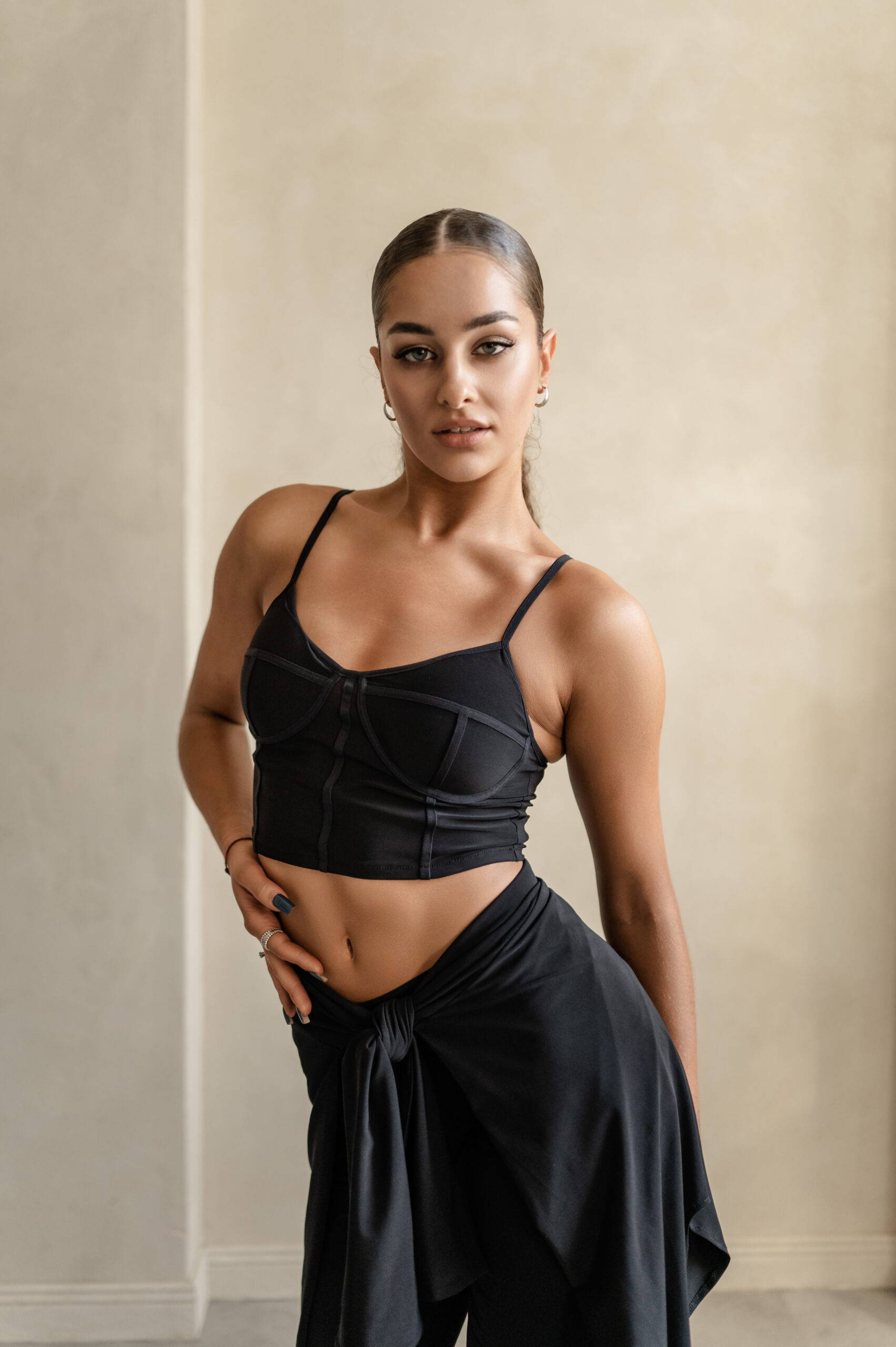
Section 4: Accessorizing and Layering with Dance Tops
Alright, we’ve covered the essential styles of dance tops and how they fit into different dance genres. Now, let’s talk about taking your dance look to the next level! Because, let’s be honest, dancewear isn’t just about functionality; it’s also about expressing your personal style and creating a look that makes you feel confident and inspired.
This section is all about the art of accessorizing and layering – those extra touches that can transform a simple dance top into a complete and polished outfit. We’ll explore how to use layering for both warmth and style, and how to add accessories that complement your top and enhance your overall look. So, get ready to unleash your inner stylist and discover how to make your dance tops truly shine!
Subsection 4.1: Layering for Warmth and Style
Okay, let’s talk layering! Layering dance tops is not just about staying warm (although that’s certainly a big part of it, especially during warm-ups and cool-downs); it’s also about adding dimension, creating visual interest, and adapting your outfit to different temperatures and dance styles. We can call it warm-up attire, or even adding dimension to your look.
Here are some tips and ideas for layering with dance tops:
- Start with a Base Layer: A fitted tank top or camisole top is often a great base layer, providing a comfortable and breathable foundation.
- Add a Mid-Layer: This could be a T-shirt, a long sleeve top, a wrap top, or even a lightweight sweater. This layer provides added warmth and coverage.
- Finish with an Outer Layer: This could be a jacket, a hoodie, a cardigan, or even a dance shrug. This layer is especially important for warm-ups and cool-downs, helping to keep muscles warm and prevent injuries.
- Mix and Match Styles: Don’t be afraid to experiment with different combinations of tops! Try layering a crop top over a leotard, a tank top under a sheer T-shirt, or a wrap top over a camisole.
- Consider Color and Texture: Play with different colors and textures to create visual interest. Try pairing a solid-colored tank top with a patterned T-shirt, or a smooth Lycra top with a textured knit wrap.
- Think About Proportions: Pay attention to the proportions of your layers. If you’re wearing a loose-fitting top, you might want to pair it with fitted bottoms (like leggings or jazz pants) to balance the look.
- Dance sweaters: There are special dance sweaters, that are usually cropped, and can be with long or short sleeves.
Layering is a fantastic way to adapt your dancewear to different temperatures, to create a variety of looks, and to express your individual style. It’s all about experimenting, finding combinations that work for you, and having fun with it! So, don’t be afraid to get creative and see what you can come up with.
Subsection 4.2: Adding Accessories
Alright, let’s talk about the finishing touches! Dance accessories can elevate your dance look from simple to stunning, adding personality, flair, and even a touch of sparkle. We’re talking about those little details that can make a big difference, complementing your dance top and completing your overall outfit. It is all about, completing your outfit.
Here are some ideas for accessorizing with dance tops:
- Jewelry: While you want to avoid anything that could be a safety hazard (like long, dangling earrings or necklaces), small, delicate pieces of jewelry can add a touch of elegance. Think stud earrings, simple necklaces, or delicate bracelets.
- Hair Accessories: Hair accessories are a must for keeping hair out of your face during dance, but they can also be a stylish addition to your look. Think headbands, hair ties, scrunchies, hair clips, and even decorative hairpins.
- Belts: A belt can be a great way to add definition to your waist and create a more polished look, especially when wearing a looser-fitting top.
- Scarves: A lightweight scarf can add a touch of color and style, and can also be used to keep your neck warm during warm-ups.
- Warm-up Gear: Don’t forget about practical accessories like leg warmers, arm warmers, and shrugs, which can add both warmth and style.
- Bags: Of course you need a special bag for all of your dance essentials!
The key is to choose accessories that complement your dance top and your overall style, without interfering with your movement or creating a safety hazard. A few well-chosen accessories can make a big difference, adding personality and polish to your dance look. So, don’t be afraid to experiment and have fun with it!
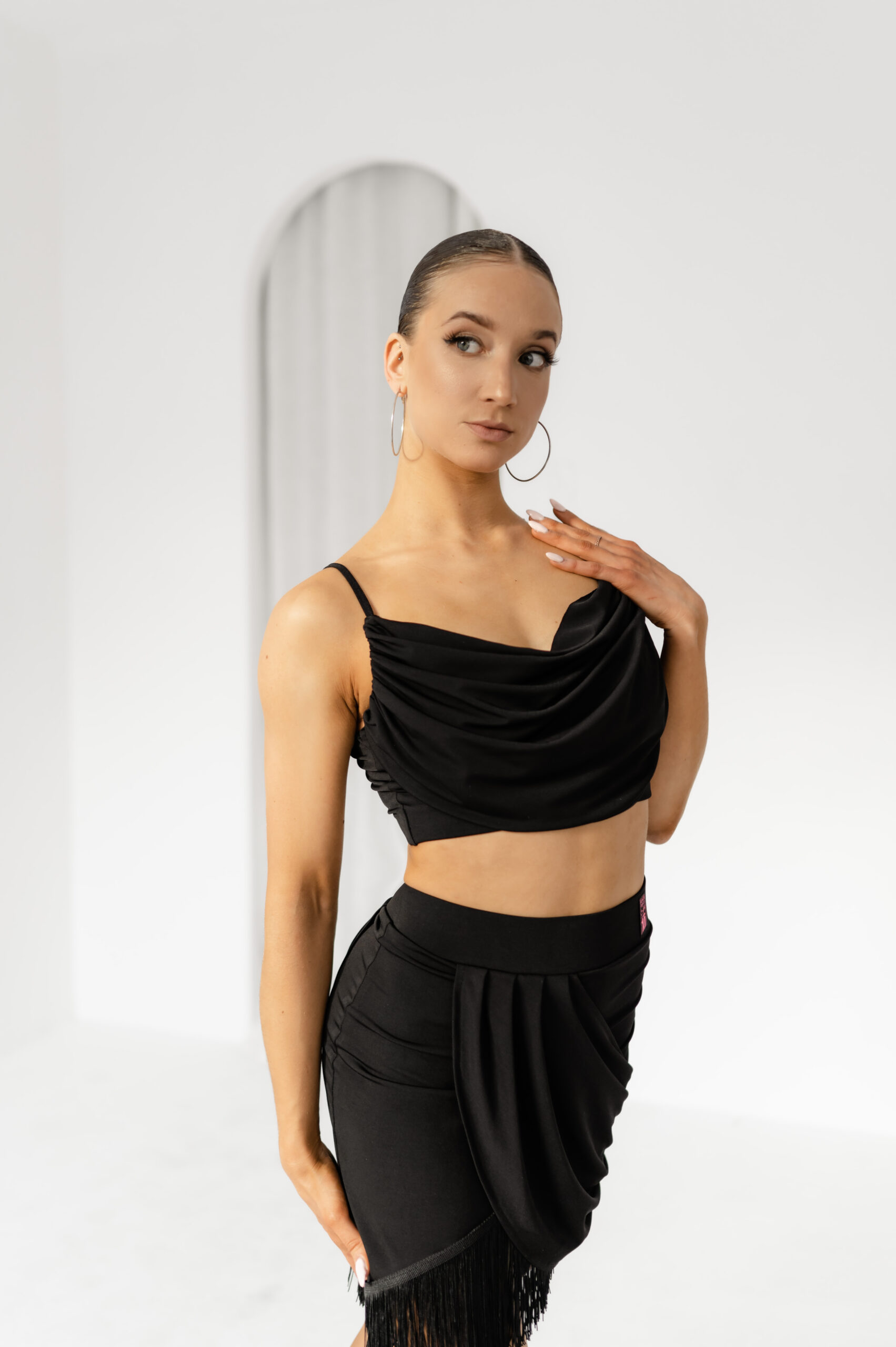
Section 5: Caring for Your Dance Tops
Alright, we’ve covered everything from styles and fabrics to accessorizing and layering. You’ve chosen the perfect dance tops, and now it’s time to talk about preservation! Because, let’s be honest, dancewear isn’t cheap, and even the highest-quality top won’t last forever if it’s not cared for properly.
This section is your essential guide to keeping your dance tops in pristine condition. We’re focusing entirely on washing, drying, and storing – all the practical steps you can take to extend the life of your tops and ensure they’re always ready for the next class or performance. Think of it as an investment in your dance wardrobe, protecting your tops and ensuring they continue to look and feel their best. So, let’s dive into the details of dance top care!
Subsection 5.1: Washing and Care Instructions
Okay, you’ve found the perfect dance tops – now let’s talk about keeping them in tip-top shape! Proper washing and care are essential for maintaining quality and longevity of your dancewear, ensuring that your tops look and feel great for as long as possible. We are talking about caring for dance tops, and proper washing instructions.
Here are some general guidelines for washing and caring for dance tops:
- Read the Care Label: This is the most important step! The care label will provide specific instructions for washing, drying, and ironing your top. Always follow these instructions carefully.
- Wash in Cold Water: Hot water can damage delicate fabrics and cause colors to fade. Wash your dance tops in cold water, either by hand or on a gentle machine cycle.
- Use a Mild Detergent: Harsh detergents can also damage fabrics and colors. Use a mild detergent that’s designed for delicate clothes.
- Avoid Bleach and Fabric Softeners: Bleach can weaken fabrics and cause discoloration, while fabric softeners can leave a residue that affects the breathability and moisture-wicking properties of dancewear.
- Wash with Like Colors: To prevent color bleeding, wash your dance tops with similar colors.
- Turn Tops Inside Out: This helps to protect any embellishments, prints, or delicate fabrics from abrasion during washing.
- Hand Wash Delicate Items: For tops with delicate embellishments, lace, or mesh, hand washing is often the safest option.
- Air Dry Whenever Possible: Tumble drying can shrink or damage dancewear fabrics. Air dry your tops by laying them flat or hanging them on a drying rack.
- Avoid Ironing (Unless Necessary): Most dancewear fabrics are wrinkle-resistant, so ironing is usually unnecessary. If you do need to iron, use a low heat setting and iron the top inside out.
- Store Properly: When folded, avoid storing tops with rhinestones or sequins in a way, that embellishments will be rubbing the fabric.
By following these simple guidelines, you can help to extend the life of your dance tops and keep them looking and feeling their best. Remember, proper care is an investment in your dance wardrobe, ensuring that your tops are ready to perform whenever you are!
Conclusion
And there you have it – a comprehensive journey through the world of dance tops! We’ve explored the diverse range of styles, from the classic tank top to the elegant wrap top, the comfortable T-shirt to the trendy crop top. We’ve delved into the importance of breathable fabrics and a secure fit, and we’ve even touched on how to accessorize and layer your tops for maximum style and versatility. We also discovered, what tops are the best for Ballet, Jazz, Contemporary or Hip-Hop.
Hopefully, you now feel much more confident about choosing essential dance tops and building a versatile dance wardrobe that allows you to express your style through dancewear. Remember, the right dance top is more than just a piece of clothing; it’s a tool that empowers you to move freely, feel confident, and perform at your best. It’s about finding that perfect balance between comfort, functionality, and personal expression.
Whether you prefer the sleek lines of a camisole top for ballet, the loose fit of a T-shirt for hip-hop, or the versatility of a tank top for just about anything, the key is to choose tops that make you feel good and allow you to dance with joy and passion. So, embrace your individual style, experiment with different looks, and never be afraid to let your personality shine through your dancewear!
1. What are some strategies for modifying dance tops to meet dress code requirements (e.g., adding sleeves, raising necklines)?
Sometimes, a dance top may be almost perfect, but needs a little tweaking to meet specific dress code requirements. Here are some strategies for making those modifications:
Adding Sleeves: You can purchase separate sleeves made from a similar fabric to your dance top. These can be attached by hand-sewing or using a sewing machine. Consider cap sleeves, short sleeves, or three-quarter length sleeves, depending on the dress code and your preference. A bolero or shrug is a great layering piece that provides coverage to the arms and shoulders. Choose one made from a lightweight, stretchy fabric that complements the top. Create detachable sleeves that can be added or removed as needed. These can be attached with snaps or small hooks and eyes.
Raising Necklines: You could add a panel of lace or mesh to the neckline to raise it while maintaining a delicate and stylish look. This works particularly well for scoop neck or V-neck tops. Use a similar fabric to create a panel that can be sewn onto the neckline to raise it. This is a good option for a more seamless and subtle look. Add a detachable collar to the top. This can be a simple band collar or a more elaborate ruffled or embellished collar.
General Tips for Modifications: Whenever possible, use fabric that matches the color, weight, and texture of the original garment for a seamless look. If you’re not comfortable making the alterations yourself, take the top to a skilled tailor or seamstress who specializes in dancewear or formalwear. Choose modifications that are appropriate for the dance style. For example, a high-neck lace insert might be suitable for ballet but not for hip-hop. Make sure the modifications don’t restrict your movement or cause discomfort. Try on the top and move around in it after making any alterations to ensure it still allows for a full range of motion.
By using these strategies, you can adapt your dance tops to meet even the strictest dress code requirements while still expressing your personal style and feeling confident on the dance floor.
2. How do I choose a dance top that will flatter my particular body type?
Choosing a dance top that flatters your body type can significantly enhance your confidence and overall look in the studio. The key is to identify styles that accentuate your best features and create a balanced silhouette.
If you have a larger bust: Look for tops with wider straps and built-in support or the option to wear a supportive sports bra underneath. V-necks or scoop necks can be flattering, but avoid necklines that are too low-cut. Empire waist tops can also be a good choice, as they draw attention to the narrowest part of your torso.
If you have a smaller bust: Experiment with tops that have ruffles, ruching, or other embellishments around the bust area to add volume and create the illusion of curves. Halter tops or tops with interesting back details can also draw attention upwards.
If you have broad shoulders: Opt for tops with wider straps or sleeves to balance your proportions. Raglan sleeves or tops with a V-neck can also help to minimize the appearance of broad shoulders. Avoid tops with spaghetti straps or overly wide necklines.
If you have narrow shoulders: Choose tops with embellishments or details at the shoulders, such as ruffles, cap sleeves, or shoulder pads. Boat neck tops or tops with horizontal stripes can also help to widen the shoulders and create a more balanced silhouette.
If you have a long torso: Shorter tops, such as crop tops or fitted T-shirts that hit at the hip, can help to create the illusion of shorter legs and a more balanced torso-to-leg ratio.
If you have a short torso: Choose longer tops that elongate your torso and create a more streamlined look. Avoid crop tops or tops that are too bulky.
If you want to define your waist: Wrap tops and fitted tops with a belt or ruching at the waist can help to create a more defined hourglass shape.
Remember, the most important thing is to choose a dance top that makes you feel comfortable and confident. Experiment with different styles and silhouettes to find what works best for your body type and personal style. Don’t be afraid to try on different tops and move around in them to see how they feel and look when you dance.
3. What are the best options for dance tops that offer sun protection for outdoor rehearsals or performances?
Protecting your skin from the sun is important, even when you’re dancing outdoors. Here are some of the best options for dance tops that offer sun protection:
Long-Sleeve Performance Tops with UPF: Look for long-sleeve dance tops made from performance fabrics that are specifically rated for UPF (Ultraviolet Protection Factor). These fabrics are designed to block a significant percentage of the sun’s harmful rays.
Lightweight, Breathable Fabrics: Choose long-sleeved tops made from lightweight, breathable fabrics like moisture-wicking polyester or nylon blends. These will help keep you cool and comfortable while still providing sun protection.
Hooded Tops: A hooded top can provide extra sun protection for your neck and face. Look for hoodies made from lightweight, breathable fabrics that won’t overheat you.
Layering a Sun Shirt Underneath: You can wear a lightweight, long-sleeved sun shirt (designed for activities like swimming or hiking) underneath your regular dance top. These shirts are often made from UPF-rated fabrics and can provide excellent sun protection.
Wide-Brimmed Hats or Visors: While not technically a dance top, a wide-brimmed hat or visor is essential for protecting your face and neck from the sun. Choose a hat that’s comfortable to wear while dancing and that won’t obstruct your vision.
Sun Sleeves or Arm Warmers: These provide targeted sun protection for your arms and can be easily removed as you warm up.
Regardless of the type of dance top you choose, remember to also apply sunscreen to any exposed skin, including your face, neck, arms, and legs. Look for a broad-spectrum sunscreen with an SPF of 30 or higher, and reapply it every two hours, or more often if you’re sweating heavily. Dancing in the sun can be damaging, so choose the right clothes!
4. How can I prevent dance tops from riding up during intense dance routines?
Preventing dance tops from riding up during intense dance routines is key to maintaining comfort and confidence. Here are some strategies to keep your tops in place:
Choose the Right Fit: A snug fit is essential, but avoid tops that are too tight, as this can restrict movement and be unflattering. Select tops that are long enough in the torso to stay tucked in or to provide adequate coverage. Consider a top that falls slightly below your hip bones.
Opt for Grippy Fabrics: Look for fabrics that have some texture or grip, such as performance knits or fabrics with a slightly brushed finish. These fabrics are less likely to slip against your skin or other clothing.
Consider Tops with Built-In Grippers: Some dance tops are designed with silicone grippers along the hemline or waistband. These grippers help to keep the top securely in place.
Tuck into Bottoms: Tucking your dance top into high-waisted leggings or pants can help to keep it from riding up. Make sure the bottoms fit snugly and provide a secure base.
Layer Strategically: Wearing a fitted tank top or leotard underneath your dance top can act as a base layer, preventing the outer top from riding up.
Use Body Glue or Fashion Tape: For certain dance styles or performances where a completely secure fit is essential, you can use body glue or fashion tape to adhere the top to your skin or undergarments. Be sure to test the product on a small area of skin first to check for any allergic reactions.
Choose the Right Style: Avoid tops with very loose or flowing hemlines, as these are more likely to ride up. Fitted or slightly flared styles tend to stay in place better. Crop tops, while stylish, might be more prone to riding up if not properly secured.
Consider Styles with Built-In Support: If your chest is the problem, then consider sports tops with some support, to keep the top from riding up.
By implementing these strategies, you can confidently move through your dance routines without the distraction or discomfort of a riding-up top. A secure and comfortable top allows you to focus on your technique and express yourself fully through dance.
5. What are some creative ways to upcycle or repurpose old dance tops?
Instead of throwing away old or outgrown dance tops, get creative and upcycle them into new and exciting items! Here are a few ideas to spark your imagination:
Turn them into headbands or hair accessories: Cut up a soft, stretchy dance top and use the fabric to create headbands, hair ties, scrunchies, or even decorative hairpins. You can add embellishments like beads, sequins, or ribbons for extra flair. Create new layering pieces: Transform old dance tops into new layering pieces by altering the neckline, sleeves, or hemline. For example, you could cut off the sleeves of a long-sleeved top to create a vest or shrug, or shorten a t-shirt into a crop top. Use them for quilt pieces: Use pieces as a filling for bed quilt.
Make practice skirts: Use elastic from waistband, and you can use the top to create skirt. Add fabric inserts or details to other garments: Cut up old dance tops and use the fabric to add interesting details to other clothing items. For example, you could add mesh panels to a leotard or leggings, or use scraps of fabric to create appliqués or embellishments. Make dance bags and accessories: Use sturdy fabric from old dance tops to create unique dance bags, shoe bags, or even tote bags for carrying your dance gear. Create practice props: Stretchy scraps can be used to make resistance bands.
Donate to a dance program or school: If your old dance tops are still in good condition but no longer fit or suit your style, consider donating them to a local dance program or school. This can be a great way to give your old dancewear a new life and help other dancers in need.
By embracing these upcycling and repurposing ideas, you can reduce waste, save money, and unleash your creativity while giving your old dance tops a new purpose and continuing to celebrate the joy of dance.
